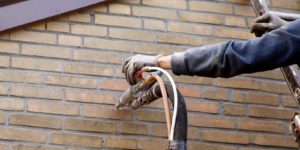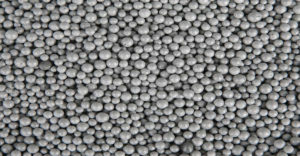What is Blown Cavity Wall Insulation?
Adding insulation to your cavity walls is a simple and efficient technique to save your heating expenses while also adding a level of comfort to your home by making it warmer.
If your house was built after the 1930s, its exterior walls are most likely composed of two skins with a tiny gap between them. This is what is referred to as a cavity wall. The space between them may be filled with insulating material to prevent heat from escaping to the outside.
Insulating your home’s walls is a vital step in reducing growing energy expenses and lowering your carbon footprint. This is due to the fact that about one-third of all energy wasted from an uninsulated property is lost through the walls.
Blown Cavity Wall Insulation?
Cavity wall insulation fills the air gap between your home’s inner and external walls, reducing the amount of energy travelling through the wall. It aids in the regulation of heat in your house, making it warmer in the winter and cooler in the summer.

Insulation Materials
Mineral wool, commonly known as white wool or glass wool, is a kind of insulation made of mineral wool. It’s a dry fill technique that blows granulated fibre into the cavity wall. The material is blown into the hollow space via a succession of holes bored in a predetermined manner.
An alternative material used in blown cavity wall insulation is Expanded Polystyrene beads, also known as EPS beads. Modern EPS Polystyrene bead systems are used as an alternative to mineral fibre.
Thousands of little polystyrene beads are blasted into the hollow space and connected using a binding agent or PVA adhesive to form a premium insulation system. The binding agent retains the beads in place and prevents them from settling or falling out of the cavity if any structural work is done afterwards.
EPS beads have excellent thermal qualities and are water repellent. The beads are extremely durable as they do not decay or degrade. They do not attract pests, parasites, or insects as they do not have any nutritional value for animal or plant life. Injecting bonded EPS beads requires fewer drill holes than wool or foam solutions.
The Best Blown Cavity Wall Insulation Products
- Thermabead Carbon Saver
Carbon saver is an energy efficient cavity bead insulation that offers a 20% improvement on the standard fibre material. It is a bead system that is blown in using a special injection gun. It is fire resistant and BBA approved for even homes exposed to extreme conditions. These expanded polystyrene beads will ensure you save money on your heating bills for the time to come. The ThermaBead system is a grey bonded-bead system that is pressure blown into the cavity wall.

- Thermabead Diamond
It is made from a material that does not shrink, crack, or settle. Should you need to remove any of the outer brickwork or replace any windows, Thermabead Diamond remains unaffected. It is also fully fireproof and BBA approved for properties in extreme conditions.
- Supafil 34
This is non-combustible glass mineral blowing wool that is used for outer cavity walls. It is water repellent and BBA certified for all zones, including relatively severely affected locations.
Installation Procedure
Confirming Suitability
Before installation, it is important to establish the suitability of your home for cavity wall insulation. For most cases, installation can proceed if:
- There’s a space that is at least 35mm wide (depending on the insulation material).
- The brickwork is still in peak condition.
- The external walls are not already filled.
As such, if your home is affected by the following, solutions should first be established and implemented properly before it becomes suitable for cavity wall insulation:
- Blocked gutters
- A space of less than 50mm
- Complex, non-traditional construction
- Rubble or other forms of dirt in the cavity
- A home that is structurally compromised or poorly maintained
- Exposure to extreme weather and driving rain
It is vital to have a registered professional make a proper assessment of your home before making any installation decision. There are always other alternatives if your home is not suitable for cavity wall insulation.
Steps for Blown Cavity Wall Insulation Installation
The most typical method of insulating cavity walls is to drill a number of tiny holes into the mortar at regular intervals, each approximately 25mm across (roughly the diameter of a ten pence piece) and inject the cavity bead insulation into the aperture.
After the insulation has been blown in, the holes are refilled. For difficult-to-reach walls, some installers utilize a telescopic lance system. As part of the building process, rigid insulation boards are frequently used in wall cavities in newly-built houses.
The Thermabead installation process only takes up a few hours for an average-size home.
- An on-scene surveyor breaks down the cost of installation while making you aware of any entitlement you may have to a grant.
- Plans are put in place for the actual installation, at your convenience.
- Before installation, the work area is cleared. All loose items are removed from the walls.
- The actual installation can then begin.
- Small holes are drilled into each elevation of the home in accordance with BBA regulations.
- The Thermabead product is then blown into the walls through the drilled holes.
- Once the insulation is done, the holes are covered up and all items removed from the work site are returned to their original positions.
Benefits of Blown Cavity Wall Insulation
- It works just as well in new properties as in existing homes
- Installation can take place in any weather condition. The material is lightweight and installation only takes a few hours.
- There are no cold spots with blown insulation. The cavity is completely filled.
- The insulation beads are extremely durable, often lasting as long as the building.
- There is a consistent insulation density.
- There is an air-drying bonding agent on the beads. Settlement is therefore prevented and no gaps form at the top of the cavity walls in the home.
CIGA
The Cavity Insulation Guarantee Agency gives independent 25-year warranties on Cavity Wall Insulation installed by registered installers. In conjunction with the government, CIGA was formed to offer homeowners an impartial, standard, and trustworthy guarantee covering faults in materials and workmanship. While problems with cavity wall insulation are extremely rare, CIGA is on hand to guarantee that they are resolved as soon as possible.
If you’re interested in other applications of quality insulation, read more on loft insulation, pitched-roof insulation or underfloor insulation.
People also ask...
-
Can you use spray foam as cavity wall insulation?>Yes, you can use expanding foam insulation as cavity wall insulation. Expanding foam uses a reaction of a two-component mixture that expands once blown... Spray foam as cavity wall insulation
-
How is underfloor insulation installed?>While installing underfloor insulation for timber and concrete floors are different procedures, one thing holds true: the efficiency of the installation is key. The goal is to have the highest level of insulation possible while using the minimum thickness of insulating material possible... How underfloor insulation is installed
-
What are possible problems with cavity wall insulation?>Even if cavity wall insulation is not done properly, the majority of homeowners remain unaware. Even if the energy savings are not as promised, there is no apparent indication of a malfunction. The majority of problems associated with moisture caused by cavity wall insulation are the result of improper installation... Cavity wall insulation problems

